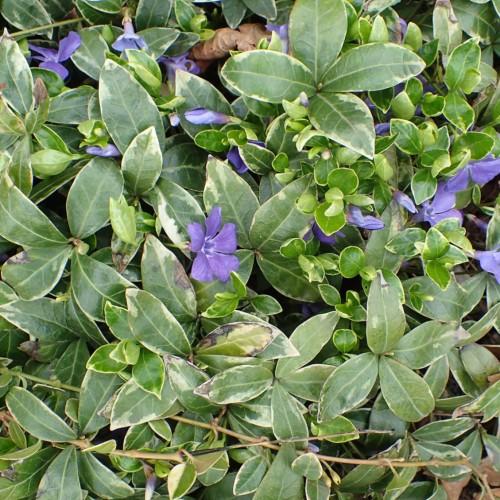
lesser periwinkle
Vinca minor 'Argenteovariegata'
Also Known As - creeping myrtleCycle:
Herbaceous Perennial
Watering:
Minimum
Hardiness Zone:
4 - 8
Flowers:
Flowers In Spring
Sun:
Filtered shade, Full sun
Soil:
Acidic, Well-drained
Fruits:
Fruits In Spring Ready In
Leaf:
Yes
Growth Rate:
High
Maintenance:
Moderate
Drought Tolerant:
Yes
Salt Tolerant:
Yes
Care Level:
Low
watering
Lesser periwinkle (Vinca minor 'Argenteovariegata') prefers moist, well-drained soil and should be watered deeply and regularly. The soil should be kept evenly moist, not soggy, during the growing season. Water the plant thoroughly when the soil is slightly dry, to keep the soil evenly moist. Allow the soil to dry out some between waterings but do not let it dry out completely. Water at the base of the plant to prevent disease. Water the plant less often in the winter, as the plant is not actively growing.
sunlight
Lesser periwinkle (Vinca minor 'Argenteovariegata') does best in full sun to partial shade. It can tolerate full sun for most of the day, as long as it is given some protection from midday heat and humidity. During the summer months, the plant should be given at least 2-3 hours of direct sunlight per day, with a few hours of indirect sunlight or full shade throughout the rest of the day. In cooler climates, where direct sunlight is limited, the Vinca minor 'Argenteovariegata' can tolerate partial shade. It will become weak and elongated in too much shade, so the ideal amount of light should be 4-6 hours of partial sun per day with some protection from afternoon heat.
pruning
Lesser Periwinkle (Vinca minor 'Argenteovariegata') is a fast-growing, evergreen, perennial flowering plant suited for sunny to lightly shaded areas. To promote fullness and for dense, compact growth, it should be pruned once a year in late spring or early summer, after the plant has finished flowering. It is necessary to remove any dead, dead-looking, or weak stems from the plant before pruning. At this time, prune several stems at the base of the plant to promote fresh growth and to keep the shrub looking full and vibrant. For larger plants, prune further up on the stems to control height and shape. It is important not to over-prune, as this can deplete the plant of its flowering potential.
